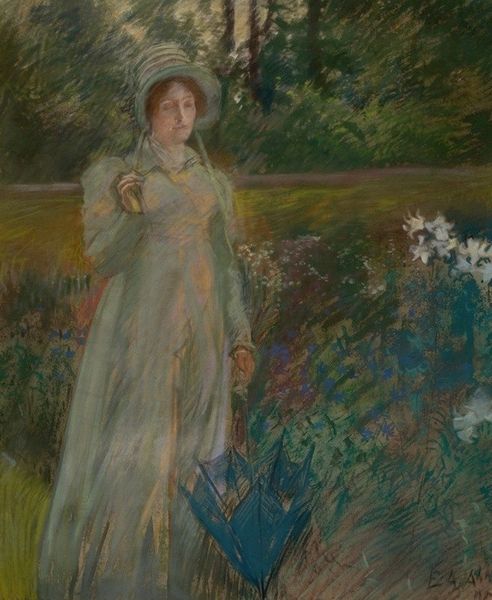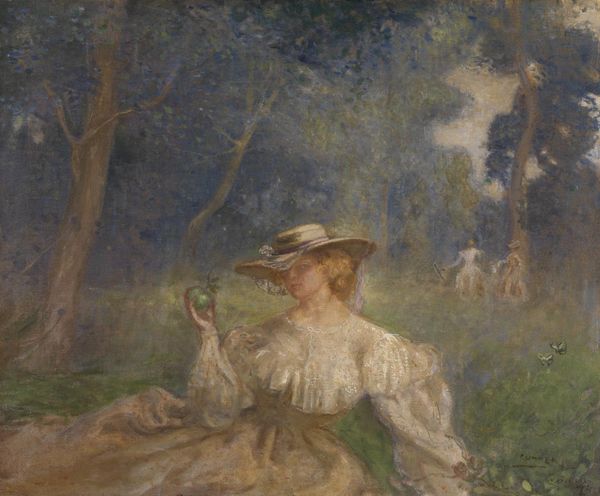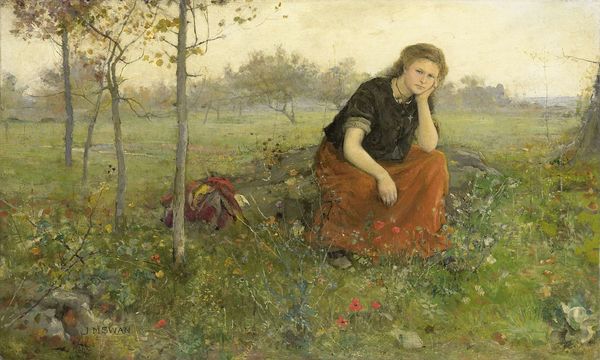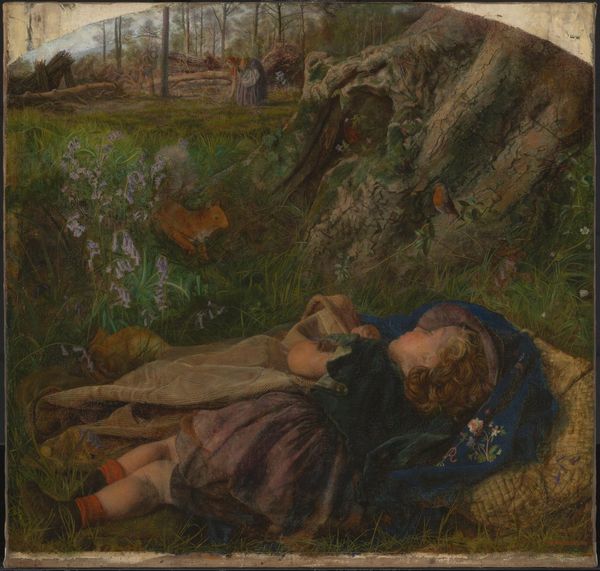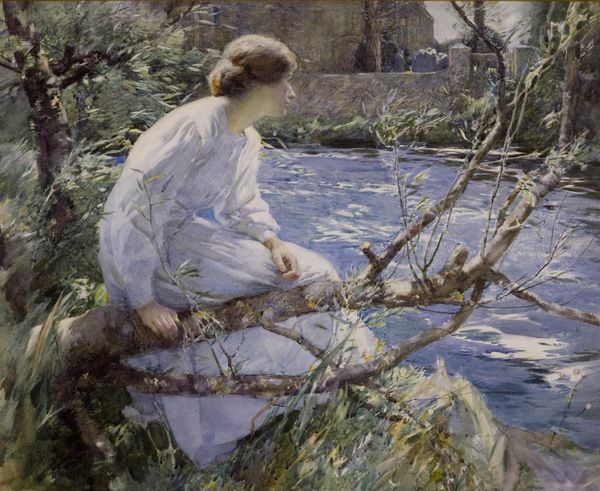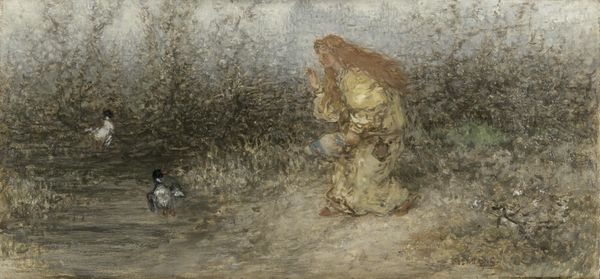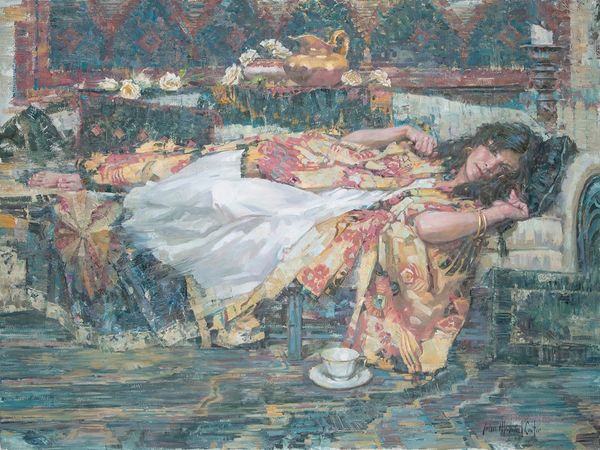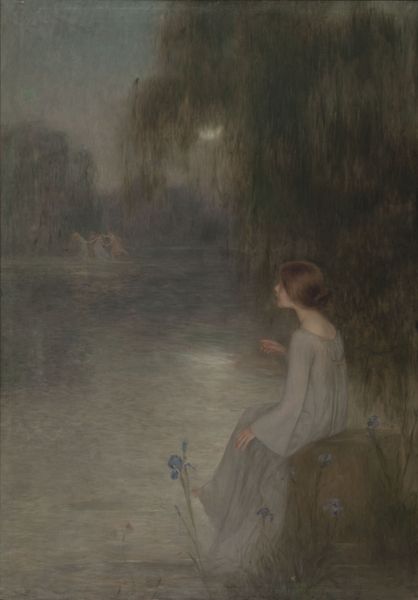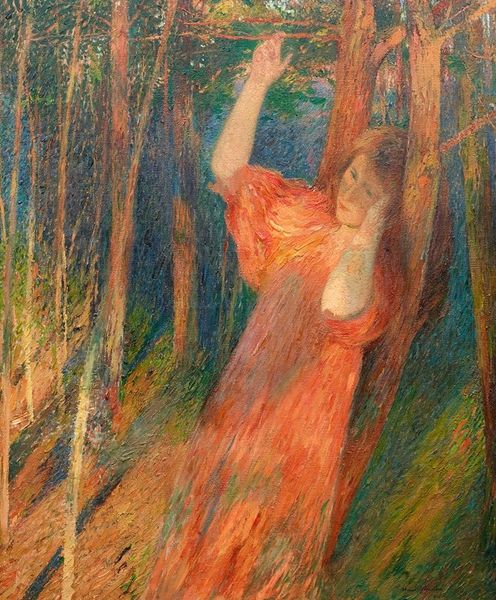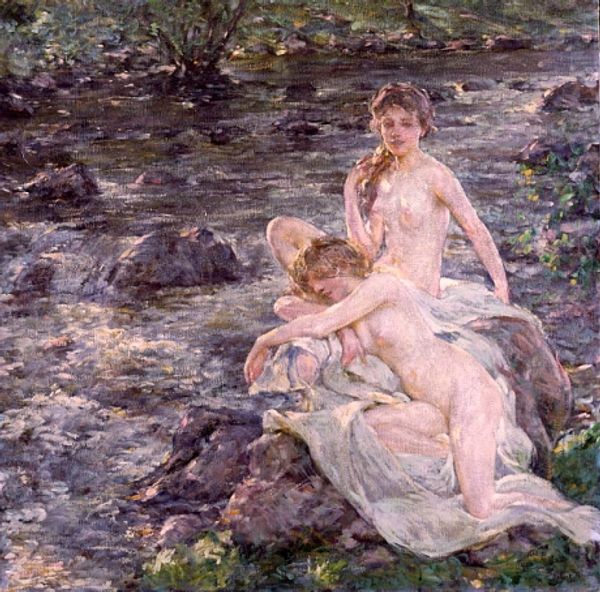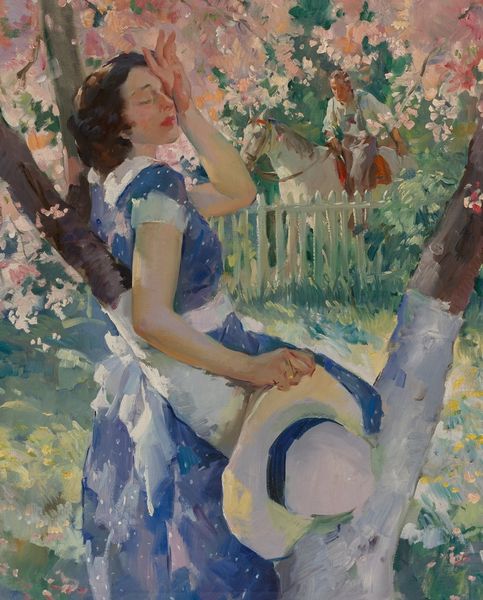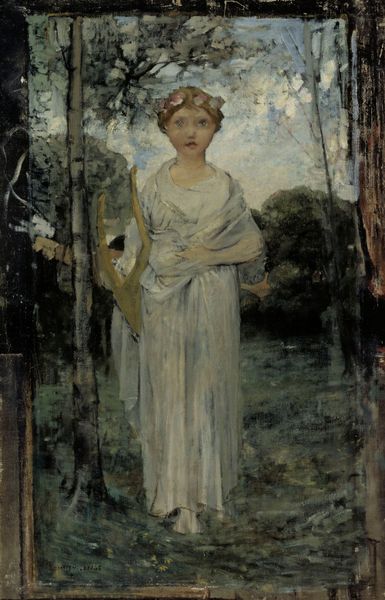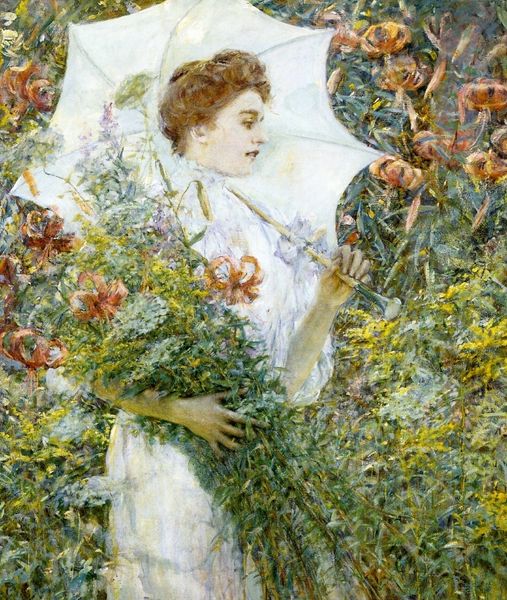
Copyright: Public domain
Curator: This is Jules Bastien-Lepage’s “Ophelia,” painted in 1881. Notice the naturalistic yet dreamlike rendering of the tragic Shakespearean character within a dense, verdant landscape. Editor: It's undeniably melancholy. The muted colors and her listless pose evoke such a sense of sorrow and resignation. It’s all rather overwhelming, actually. Curator: I agree, and part of that stems from Bastien-Lepage’s dedication to depicting not just Ophelia, but also the specific details of her surroundings with incredible care. Observe the varying textures – from the heavy drapery of her skirt to the delicate brushwork used to depict each blade of grass and wildflower. The facture creates such realism. Editor: Absolutely, and that tension between the almost photographic realism of the foreground and the more loosely defined background is key. He has used paint in a way that calls attention to its materiality. And when we situate Ophelia’s tragedy within the social constructs of her time, where female madness was often pathologized and linked to hysteria, that intense gaze is deeply unsettling. Curator: I’m intrigued by the labor that went into this. Look at the detail on the gown! Bastien-Lepage trained at the Académie des Beaux-Arts, mastering traditional techniques before developing his own approach, melding academic training with naturalist principles. Considering who this painting would be for and displayed also adds nuance. Editor: True, and the art-historical context is crucial. Paintings of Ophelia had become quite popular in the Victorian era. The Pre-Raphaelites had fixated on her, using her as a muse for representations of feminine vulnerability. Bastien-Lepage builds upon that visual history but steers clear of the romantic idealization of death. The setting acts to symbolize the weight that was forced upon women that was their identity during the time, with them almost becoming another detail of nature, yet held to even higher moral standards than society. Curator: What do you think of its accessibility? It merges the fine art context of an oil painting on canvas with a composition and character study that makes you feel something whether or not you know Shakespeare or feminist theory. Editor: Exactly. The weight of societal expectations. So tragic! Considering both the historical and art world factors makes this an engaging image. Curator: Precisely, and recognizing how it came together physically on the canvas as something to hang in an important space—it truly represents so much talent and technique that, regardless of message, becomes undeniable.
Comments
No comments
Be the first to comment and join the conversation on the ultimate creative platform.
